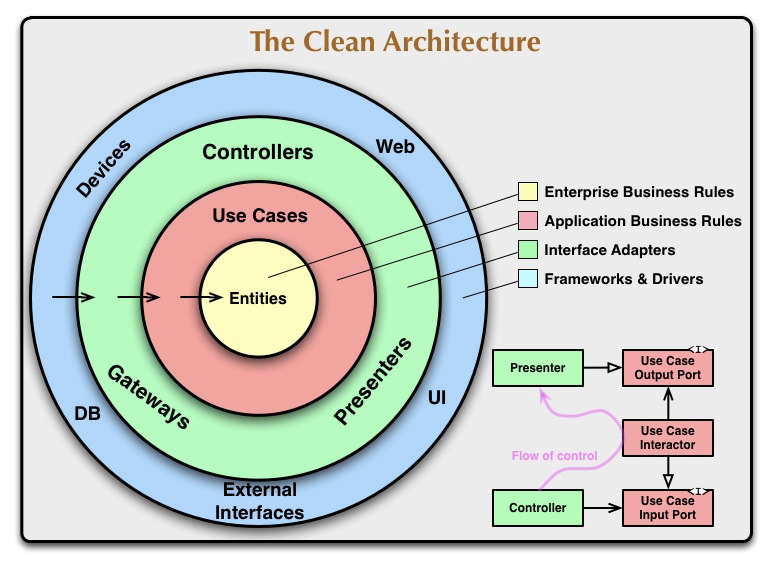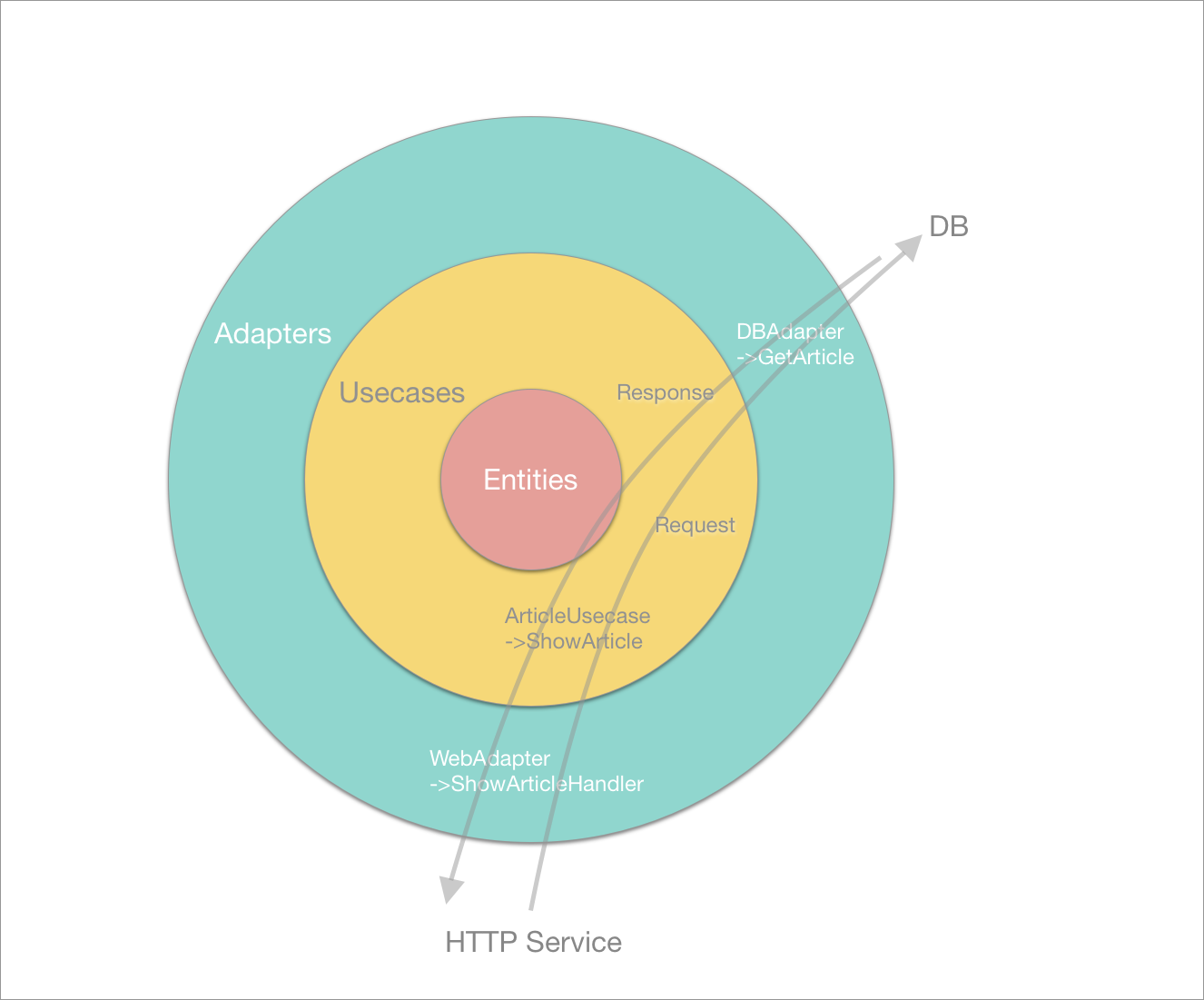Over the years, Go has become a widely used programming language across various fields. From foundational components like k8s and Docker to microservices in the business domain, Go can be used to build them all. When constructing these Go projects, the choice of architecture pattern and code layout is subjective. Those with Java Spring experience might opt for the MVC pattern, while those familiar with Python Flask might choose the MTV pattern. Moreover, since there is no mainstream enterprise-level development framework in the Go language domain, many projects lack a clear architectural pattern.
Clean Architecture

Clean Architecture, proposed by Uncle Bob, is an architectural pattern suitable for complex business systems. Its core idea is to decouple business complexity from technical complexity. Compared to patterns like MVC and MTV, Clean Architecture not only involves layering but also clarifies the interaction with external dependencies and the boundaries between external dependencies and business logic through dependency rules. Interested readers can refer to the original article by the author here.
Due to its flexibility in being language and framework agnostic, the author did not specify implementation details when proposing Clean Architecture, making its application challenging. The following example illustrates how to apply the principles of Clean Architecture in a Go project.
Layout
For a Go project, regardless of the architecture pattern used, it is recommended to establish app and scripts directories. The app directory contains the entry file for starting the Go project, usually main.go. The scripts directory can hold scripts used during build and deployment.
clean_architecture_demo
├── README.md
├── app
│ └── main.go
├── scripts
│ ├── build.sh
│ └── run.sh
├── go.mod
├── go.sum
└── usecases
Next is the code section, divided into entities, usecases, and adapters.
entities: Stores domain entities. For example, in a blogging system, domain entities might include users and articles.usecases: Stores business logic. In a blogging system, this might include user-related business logic (e.g., signup_user, signin_user, add_user, delete_user) and article-related business logic (e.g., add_article, show_article, delete_article).adapters: Stores adapter logic. Adapters connect business logic with external dependencies. For a blog providing services in a web form, anhttp_adapteris needed to encapsulate web services; to save articles to a database, adb_adapteris needed to connect.
Below is the project layout structure.
clean_architecture_demo
├── README.md
├── adapters
│ ├── api
│ ├── db
│ └── log
├── app
│ └── main.go
├── scripts
│ ├── build.sh
│ └── run.sh
├── entities
│ ├── article.go
│ └── user.go
├── go.mod
├── go.sum
└── usecases
Data Flow
Let’s describe the call chain using a request to query an article.
- The user calls the
ShowArticleHandlermethod ofWebAdapterthrough the HTTP service. - Since it involves article-related logic,
ShowArticleHandlercalls theShowArticlemethod ofArticleUsecase. - To query the article from the DB,
ArticleUsecasecalls theGetArticlemethod ofDBAdapter. DBAdapter’sGetArticlequeries the article content from MySQL and returns it toArticleUsecase.ArticleUsecasereturns toWebAdapter.WebAdapterreturns the result to the user through the HTTP service.

Code Example
To more clearly illustrate layering and architecture, I have published a sample project on GitHub. Interested readers can view the source code here: https://github.com/simpleapples/go-clean-architecture
Conclusion
Since Clean Architecture does not specify implementation details, the above layering and layout approach is just a reference, and there are numerous ways to practice it. For example, the Adapter layer can be subdivided into parallel Presenter+Gateway layers based on the type of external dependencies. In complex projects, more detailed layering can further refine the code. You can adjust the layering and layout according to your project’s scale, and I won’t elaborate further here.